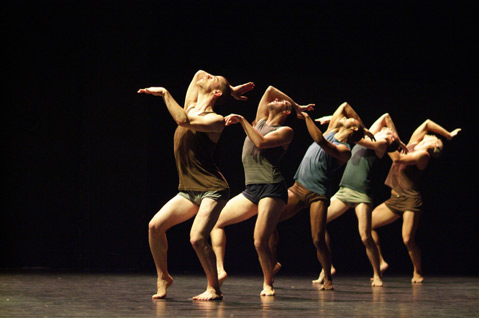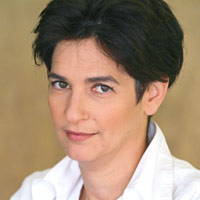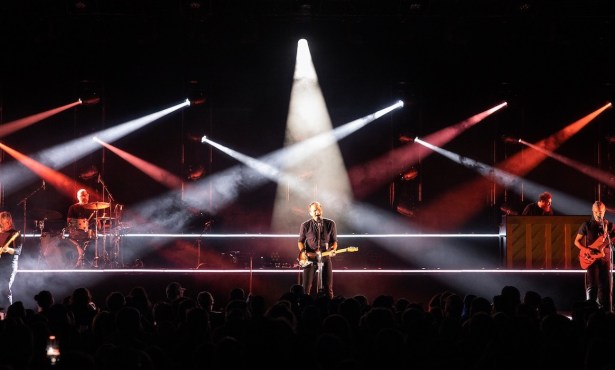Israel’s Batsheva Dance Company Comes to Santa Barbara
Co-Artistic Director Discuses Company's Unique Movement Language

Some choreographers like to tell stories. Ohad Naharin is not one of them. The artistic director of Israel’s acclaimed Batsheva Dance Company, Naharin consciously avoids narrative in favor of choreography that fuels the imagination and lends itself to as many interpretations as there are audience members.
It hasn’t always been that way at Batsheva. When Martha Graham and Baroness Batsheva de Rothschild founded the company in 1964, it was the only group in the world besides the Martha Graham Dance Company in New York that performed Graham’s work-now iconic American modern dances that tapped emotional depths and used narrative to express human drama. But since his arrival in 1990, Naharin has worked with the dancers to create a new language of movement that transcends cultural boundaries. At the same time, he has developed the company’s reputation as Israel’s cultural ambassador.

Though Batsheva has never before performed in Santa Barbara, Naharin’s work has made a few appearances; most recently, Les Grands Ballet Canadiens brought his evening-length work Minus One to the Arlington Theatre in 2007. On Tuesday, February 24, at the Arlington Theatre, Batsheva makes its Santa Barbara debut with Naharin’s newest work, Max. Last week I spoke to Co-Artistic Director and Executive Director Naomi Bloch Fortis on the phone from Tel Aviv.
I was just reading about Israel’s parliamentary elections. To what degree would you say politics affects Batsheva’s work? In many ways, internal politics do not affect the company’s work. Politics do influence the amount of subsidy toward the arts, but it’s not like some governments shut down companies and others open them. Something of the freedom of the arts is always here.
As for the situation in Israel, being Israeli means you are a part of everything that happens to our country. But Ohad Naharin believes that his work is not connected to geographical, national, or religious differences. It’s above those borders or definitions. Many times people will say that what they feel or experience in his work has to do with the conflict, but in our work we never tell a story or deliver a message or portray reality. Yet we live here and create here, so the social consciousness is always part of what we do. As an artist, you are aware and sensitive to those trends.
How would you describe Naharin’s style? It’s difficult to portray his signature style. There’s a distinct body language, and also a stage language-the way he composes time, space, music, and light with the bodies onstage. What Naharin does is never telling one story or message; it’s always many things happening, many stories taking place at the same time. He would like to ask the audience to engage the power of the imagination with free, open minds. What comes through to you as a spectator is as good as the interpretation of the person next to you.
Tell me about the movement language Naharin has developed. It’s a body language he calls “Gaga,” and it’s the language the dancers are trained in daily. It’s a kind of code that enables a very efficient process of creation. It’s about full awareness of all the senses, exaggeration and understatement, different textures of movement, explosive power, our weaknesses and strengths, reconstructing a habit of movement, and being available, being all the time available. And that’s just the beginning.
Tell me about Max. It’s his most recent work, and it reflects in a very strong way where the laboratory of Batsheva is right now. This work has been developed in the studio with the dancers as meaningful contributors of movement. For this work, Naharin developed the music and choreography simultaneously, which is not the case for every piece. The costumes are very simple and very much about seeing the flesh and being able to experience the human being, not the dancer. It’s not about decorating anything, or telling a story.
What do you look for in your dancers? Batsheva dancers are very individual in the way they look: taller, shorter, bigger, smaller. We choose them to be individually different. They have to be highly coordinated, musical. They need to be able to take the burden of the work. But that’s obvious. On top of that, they need to be artists in their own right: curious about exploring movement and their body. They also to have an inner fantasy world they can bring with them.
Anything else your Santa Barbara audience should know? I’d ask them to trust themselves and believe that if they can enjoy a good book, movie, restaurant, or play, they can enjoy dance.
4*1*1
Batsheva will perform Ohad Naharin’s Max at the Arlington Theatre on Tuesday, February 24, at 8 p.m. For tickets, call 893-3535 or visit www.artsandlectures.ucsb.edu.



